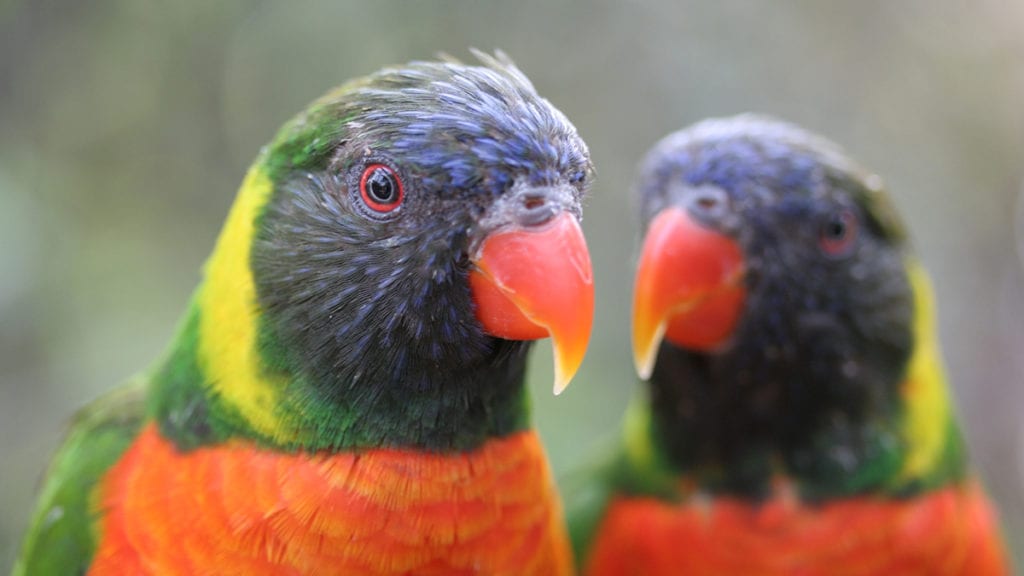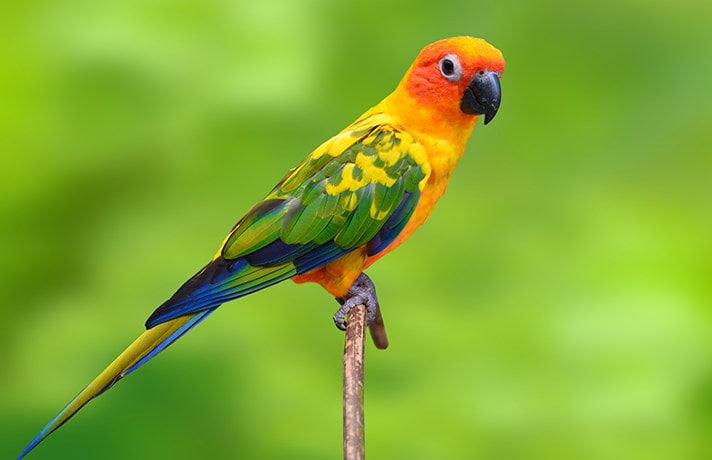As a wildlife educator, one of my favorite activities to do with my participants is to play an adaptation game demonstrating how birds obtain their food. One version of the activity is to have everyday items (paperclips, toothpicks, beads, etc.) in a shallow pan and have the participants use assorted utensils which represent different styles of bird beaks to retrieve and “eat” the items.
To demonstrate a flamingo, participants use a spoon to strain through the water to catch their meal. To represent the strong raptorial clasp of a hawk a staple remover is used; for a warbler, tweezers.
“An adaptation is a characteristic that helps an organism survive and/or reproduce in its environment,” said Jennifer Fee, K-12 program manager at Cornell Lab of Ornithology.
Fee is a member of the Cornell Lab of Ornithology’s education team, which creates innovative resources and training that build science skills while inspiring young people to connect to local habitats, explore biodiversity and engage in citizen science projects.
As they write on their website:
“We aim for students to investigate their own questions about birds and biodiversity. Beyond the classroom, we spark curiosity, build science skills, and inspire action by lifelong learners within the United States and abroad.”
The above activity is one of many that can be customized to various ages.
They may not look like it, but penguins have excellent camouflage. With their white bellies, they are hard to see from below with the light hitting the water. From above, the penguins blend into the darkness of the ocean.
Why Bird Adaptations Are So Diverse
Birds are incredibly diverse and live in many habitats, making them a great topic for exploring and teaching adaptations. Here are a few examples:
Birds that live in the desert such as the curved-billed thrasher, native to the Southwest of the US and Mexico, sleeks their feathers to create a thin insulating layer to help cool off on a hot day.
Cold-weathered penguins have a downy under portion of their feathers that also acts as an insulating layer, which is warmed by body heat. A penguin’s feather color is an adaptation using camouflage to hide from aquatic predators. Predators underneath them, looking up, see the white stomach of the penguin distorted into the bright white sunlight. Predators looking down see the dark abyss of the ocean and the penguin’s black back.
A Great Blue Heron has physical adaptations like long legs to allow it to wade and stand in the waters in which it hunts, and a sharp beak for stabbing the fish it eats. The heron also has behavioral adaptations, like walking slowly, standing still, and stabbing prey quickly.
Yellow-billed storks, native to tropical East Africa, are known to have one of the quickest muscular reflexes in their neck allowing them to catch the majority of their food in the water. Their long bills that are narrow with curve tips allow them to catch small prey such as small fish, frogs, insects and worms. As a behavioral adaptation these birds use one foot to stir up the water to flush out their next meal.
“In particular, birds have widely adapted beaks, legs, and wings,” Fee said. “From the tweezer-like beaks of insectivorous warblers to the flat bills of many ducks, from the long legs of the wading birds to the very tiny legs of swifts that spend lots of time in the air catching insects, from the broad wings of soaring birds to the narrow wings of fast birds like falcons; these body parts help birds live where they live and eat what they eat.”
Adaptations are produced by natural selection and in addition to being structural, they can also be physiological or behavioral.
Killdeers are related to plovers. To protect their young, they’ll pretend to be injured and lead predators away from their nest.
How Birds Use Adaptations To Protect Their Young
Last month, when I was in Khao Yai National Park in Thailand, I experienced a behavioral adaptation that made me think of my parent’s backyard field. At the national park, I was in an open field and quickly saw two birds fly up into the air calling loudly. They seemed to be flying haphazardly but I soon figured out their intent. We were approaching their ground nest and these birds were luring us away from their nest.
Killdeer, a native to North America, would display this behavior often in my parent’s home whenever they were nesting in the nearby cemetery. (Growing up by a cemetery was not that scary – I promise.) Related to the plover family, killdeer nest in open spaces such as parking lots, gold courses, grass lawns and cemeteries.
Killdeer will display the “broken-wing act” if you stumble upon their nest. This adaptation diverts you, the potential predator, away from their nest. The behavior includes flying or running away from the nest and laying down with a wing splayed out to entice predators to an easy meal. If the predator or you approach this theatrical bird, it will often times pop up and run comically farther away from the nest and collapse once again with their wing out.
By visiting the Cornell Lab of Ornithology online you can learn more about adaptations. Fee and her team spend a lot of time writing and editing science lessons and educational blog posts, planning and implementing training workshops for educators, and help teachers implement outdoor and citizen science activities.
“I think it’s important to teach about adaptations because it is so tied to evolution and diversity,”she explained. “Looking at a bird’s adaptations can give people an appreciation and understanding of where that bird lives, how it survives, and who its closest relatives are.”
Fee says it can be difficult to help children understand how and why organisms change over the course of evolution through natural selection, and why we see so much diversity on our planet today. By focusing on bird adaptations, educators can tackle these important science topics while giving kids an appreciation of biodiversity.
Comparing Adaptations Of Birds Worksheets & Kits
Several BirdSleuth K-12 teaching resources that cover the topic of adaptations include:
Free resources:
Feathered Friends: The January Lesson, “Eat Like a Bird,” focuses on bird beak adaptations. (Elementary)
Beaks: A book-reading and activity guide focused on beak adaptations. (Elementary)
Evolution in Paradise: Learn about natural and sexual selection. (High School)
Kits available for a fee:
Most Wanted Birds: Learn about bird diversity and participate in citizen science. (Curriculum Kit, 4-8th grade)
Nature Detectives: Learn about birds and their habitats through fun hands-on activities. (Curriculum Kit, 3-8th grade)
Posted by: Chewy Editorial
Featured Image: Via iStock.com/TheDman
Share:









